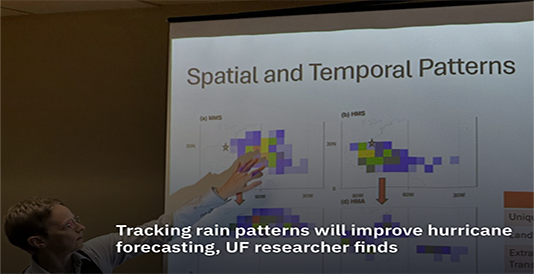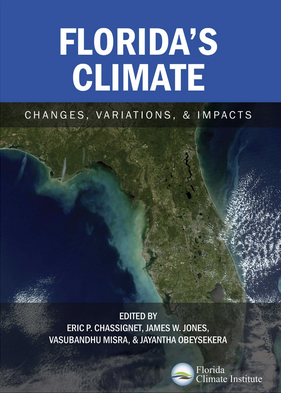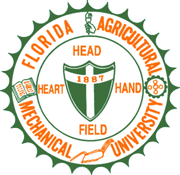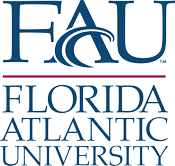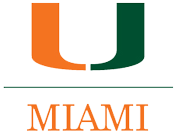Contact Person: Fraisse, Clyde
Collaborators: J.Baez, N. Breuer, J. M. Fernandes, C. A. Forcelini, C. Fraisse, W. Pavan
Institutions: Universidad Catolica Nuestra Senora de la Asuncion (Paraguay); University of Florida; University of Miami; Universidade de Passo Fundo (Brazil)
Funding Agency: USDA NIFA / FSU
Start: July 2008 End: June 2011
Status: Funded
Filed Under: Agriculture, Climate Sciences, Extension, Human Dimensions, Water
Abstract: The long-term goal of this project is to design, develop, and implement a prototype comprehensive information and decision support system. The purpose of this system is to inform farmers, ranchers, foresters, water resource managers, industry, and policy makers about climate risks and to identify management practices that can reduce risks and increase benefits by using this climate information.This system has been implemented on the Internet at http://www.AgroClimate.org.
Specific objectives for this study are:
- To design and develop prototype climate forecast information
- To design and develop prototype state and regional agricultural and water resource outlooks
- To design and develop prototype commodity-based decision support system
- To design and develop prototype watershed-based decision support system
- To educate producers and their advisors on the applications of climate-based decision support systems and
- Evaluate the design and potential value of decision support tools and systems.
Contact Person: Fraisse, Clyde
Collaborators: C. Fraisse, H. Berbery
Institutions: University of Florida
Funding Agency: Inter-American Institute for Global Change Research (IAI)
Start: April 2009 End: March 2011
Status: Funded
Filed Under: Climate Sciences, Human Dimensions, Land
Contact Person: Smith, Shawn R.
Collaborators: S. Cocke, M. Powell
Institutions: Florida State University, NOAA
Funding Agency: IESES (Florida States University)
Start: Jan 2009 End: December 2010
Status: Funded
Filed Under: Energy, Human Dimensions
Abstract: Proposals for offshore wind farms along the United States coastline are growing in number. Two main considerations are used in the determination of a region's potential for wind power: shallow water depths and wind speed values large enough to produce profitable wind power quantities. The Northern Gulf of Mexico lies above the West Florida shelf and is known to experience strong large-scale diurnal flow regimes, including sea/land breeze circulations. Until recently, lack of surface observations in this area has been a limiting factor in producing an accurate measure of whether or not an offshore wind farm is a viable option. The Northern Gulf of Mexico Cooperative Institute (NGI) has supported surface atmospheric and oceanic measurements at Air Force tower number 7 (N7) in the Apalachicola Bay since October 2008. This newly acquired data provides a primary resource for the author's analysis of potential wind power generation for the Northern Gulf of Mexico. Wind power potential is assessed using three sources. Surface observations are used from the NGI tower number 7 (N7) and the National Data Buoy Center's Tyndall AFB Tower C (N4). North American Regional Reanalysis (NARR) model data is compared to observed data to establish whether models can serve as a reliable source for determining potential wind generation in areas where in situ data is not available. Wind speed, air temperature, dew point, and water temperature are used to calculate the average raw hourly power density at anemometer height (30 m) and at a typical wind turbine hub height (85 m). Two methods are used in adjusting the 30 m in situ and model wind speeds to the 85 meters needed: a crude adjustment using the power law and the BVW (Bourassa-Vincent-Wood) flux and sea state model. For a GE 3.6 MW offshore turbine to reach minimum production it must encounter wind speeds above 3.5 m/s and maximum production is reached at 14.5 m/s. The average wind speed for the N4 and N7 towers at 30 m ranged from 5-7 m/s and increased by about 1-2 m/s after adjusting to 85 m. The log adjustment of the wind speed reveals about a 0.5 m/s more of and increase than the BVW model. A comparison to the NARR model indicates that using approximated data underestimates the available wind power in a region. The extremes found in the observed data are simply not seen in the model data. Overall, the northwestern Gulf of Mexico does show the potential in making several thousand megawatts of power available to homes in Florida.
Contact Person: Grunwald, Sabine
Collaborators: G. L. Bruland, N. B. Comerford, W. G. Harris, D. B. Myers, D. V. Sarkhot, G. M. Vasques
Institutions: University of Florida, University of Hawaii at Manoa
Funding Agency: U.S. Department of Agriculture (USDA) -National Institute of Food and Agriculture (NIFA)
Start: September 2009 End: September 2010
Status: Funded
Filed Under: Land
Abstract: The goal of this research is to assess the effects of land cover/land use (LC/LU) change on carbon stocks giving special attention to translating site-specific carbon pools (labile, recalcitrant and total carbon) to landscape scales. Our objectives are to: (i) Determine soil carbon pools in various ecosystem types across a large southeastern landscape (Florida) cutting across soil nutrient, LC/LU and climatic/hydrologic gradients; (ii) Investigate the strength and magnitude of relationships between environmental landscape properties and corresponding carbon pools within a GIS; (iii) Derive functional models relating measured soil carbon fractions to soil spectra in the visible/near-infrared (VNIR) range to develop rapid and cost-effective soil carbon prediction models; (iv) Model change trajectories, i.e. assess historic and actual soil carbon stocks and turnover rates in various ecotypes; and (v) Upscale site-specific VNIR-derived and laboratory-measured soil carbon pools to the landscape scale by modeling spatial autocorrelations and covariations with environmental landscape properties; and validate the derived geospatial soil carbon models using an independent dataset. Our methodology is based on comprehensive historic (~1,300 soil samples) and reconnaissance (~1,000) soil samples representing various ecotypes identified using a a stratified-random sampling design (strata: land use-suborder combinations). Various hypotheses will be tested to investigate relationships between soil carbon pools and environmental landscape properties using analysis of variance, multivariate regression methods and Canonical Correlation Analysis. Chemometric modeling will be used to relate spectra to analytical measures. Hybrid geospatial methods will be used to develop soil carbon models for Florida. This proposal addresses USDA's priority research areas including spatially-explicit soil carbon modeling.
Contact Person: This email address is being protected from spambots. You need JavaScript enabled to view it.
Collaborators: S. Leitman, B. Blanchard, D. Tankersley
Institutions: University of Florida, Florida State University
Status: Funded
Filed Under: Water
Abstract: The fundamental dilemma we explore is the process through which states may equitably and sustainably share the water resources of a transboundary river basin. This case focuses on the Apalachicola-Chattahoochee-Flint (ACF) basin that includes portions of three states: Georgia, Alabama, and Florida. For three decades, these states have been engaged in what the media has dubbed the "Tristate Water Wars." The key argument is over the equitable allocation of water in the basin among different states and user groups. Conflict is exacerbated during periods of drought. The federal government has not legislatively defined standards for interstate sharing of water in the same manner as it has with water quality through the Clean Water Act. There is no agreement or authority that guides basin-wide water management and the equitable division of water among all parties with an interest. The states have four options to achieve this goal: (1) form an interstate compact (this was attempted in 1999-2004), (2) have Congress pass legislation, (3) litigate through the federal courts, or (4) do nothing. This project has two major objectives. First, to present stakeholders' perspectives -- in their own words -- as to how equitable and sustainable water sharing could be accomplished and why this has not yet been achieved. Second, to create an educational tool that allows students to explore potential outcomes of various water allocation decisions. This case offers students an opportunity to explore how science and social values interact in the management of a large, complex, common-pool resource. It builds on existing scholarship: Leitman (2005) has published a case study of the ACF Compact and its ultimate demise. We therefore propose an updated case study that focuses on what has occurred in the basin since 2004 in order to show the Compact efforts as part of a longer-term trajectory of policymaking and governance.
Opportunities
Funding
- Resilience: Vulnerability and resilience management for socio-environmental systems in exposed territories | October 17, 2025 (Pre-Proposals)
- NSF Atmosphere Cluster (AGS-AC) | ongoing
- NSF Geospace Cluster (AGS-GC) | ongoing
- Duke Energy Foundation | Ongoing

